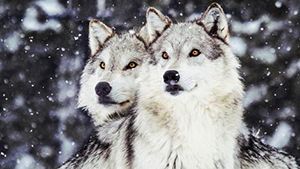
Janus Henderson: Beware the bond market wolves

Ultra-accommodative monetary policy by the US Federal Reserve (Fed) and other central banks has created many market distortions, among them the disappearing term premium, or the extra compensation investors demand to bear the risk of lending money for longer periods of time.
05.12.2017 | 09:41 Uhr
 With risk largely mitigated, the term premium disappears. The drop in risk has everything to do with monetary policy since 2008. Just as important as the central bank ‘put’, which took realised risk out of the financial system by creating a safety net for investors, is the distortion in risk levels caused by low interest rates. Here’s how that worked: as bond yields plummeted, investors sought alternative ways to earn income and a popular choice was to ‘sell’ volatility, which took perceived risk out of the system by pushing measures of implied volatility to historical lows.
With risk largely mitigated, the term premium disappears. The drop in risk has everything to do with monetary policy since 2008. Just as important as the central bank ‘put’, which took realised risk out of the financial system by creating a safety net for investors, is the distortion in risk levels caused by low interest rates. Here’s how that worked: as bond yields plummeted, investors sought alternative ways to earn income and a popular choice was to ‘sell’ volatility, which took perceived risk out of the system by pushing measures of implied volatility to historical lows.
However, over the past month, yields on two-year Treasuries have moved up about 40 basis points (bps) to their highest since 2008 on expectations of further Fed rate increases. Just as ultra-low rates drove down volatility, the same economic forces of substitution should work in reverse, lifting volatility as rates normalise and investors move away from selling volatility. Risk will return and with it the term premium.
The wolves of Yellowstone
The imbalances that have caused yields and volatility to plummet are the financial equivalent of US hunters extirpating (eradicating) grey wolves from the Yellowstone National Park by 1926. With the apex predator gone, elk, antelope, and deer multiplied almost unrestricted. When wolves were reintroduced in 1995, the ruminants were thinned and driven back to higher ground along with bison, which had previously trampled valley saplings to allow grass to grow along the banks of rivers, causing erosion.
With the herds of herbivores gone, willow and aspen trees grew, slowing erosion and providing nesting sites for birds, some of which came back to the valleys after an 80-year absence. Beavers built dams, creating ponds that benefited moose, water fowl, fish, and amphibians. Coyotes that the wolves didn’t kill fled to high ground, allowing ground squirrels to live alongside the rivers, heralding the return of their main predator, badgers. Wildflowers flourished after sheep were scared back onto the cliffs, which meant bee, hummingbird, and warbler populations rose.
All because wolves – or risk – returned to restore balance in the system.
Rising rates should help remove distortions
Selling volatility – a rational response to low interest rates – has pushed the CBOE Volatility Index of implied equity volatility, or VIX, to about half its historical average and the lowest in a decade. Meanwhile, the Merrill Lynch Option Volatility Estimate (MOVE) Index, which measures volatility in interest rates, has plummeted to its lowest on record.
However, as rates rise, the logic behind selling volatility to earn income weakens and once the pressure from selling options eases, perceived risk will come back into the system, paving the way for the return of the term premium as investors demand more compensation to bear increased risk. This is what the options market is signalling by pricing in more negative skew to Treasuries with maturities longer than 20 years versus those of 10 years and shorter.
Just as wolves restored the natural order in Yellowstone, rising rates should help remove distortions and imbalances in capital markets by lifting volatility to more normal levels and restoring the term premium which, all else being equal, will steepen the yield curve rather than flatten it further.



Diesen Beitrag teilen: